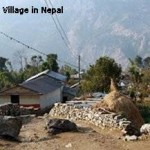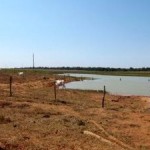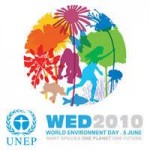
Washington, D.C. – Scientists from 12 organizations in Europe, Africa and the US demonstrated that forest exploitation begins with the removal of the most valuable products first, such as timber for export, followed by the extraction of less valuable products such as low value timber and charcoal in strict sequence. This ‘logging down the profit margin’ in tropical forests follows the same pattern of removal seen for fish in unmanaged oceans.
The study, published in ‘Proceedings of the National Academy of Sciences’, tested an economic model that predicts the sequential removal of products from high to low value. Researchers visited forests at varying distances up to 137 miles from Tanzania’s largest city, Dar-es-Salaam, in 1991 and again in 2005, tracking the trees that remained. They found that waves of degradation moved, on average, six miles a year out from the city. For example, charcoal extraction extended 31 miles from Dar es Salaam in 1991, but in 2005, it was found up to 106 miles from the city.
“The degradation waves have spread rapidly. Urban migration and rising demand for timber, particularly in China, are amongst the major reasons for this,” said lead author Dr. Antje Ahrends of the Royal Botanic Garden Edinburgh. “By the end of the study, high value timber logging production took place over 125 miles from the city. This is very likely to be unsustainable.”
The ability to predict forest degradation is essential if new market-based incentive programs to protect forests are to be successful. Such plans, like the proposed ‘Reducing Emissions from Deforestation and forest Degradation’ (REDD) being negotiated under the UN Framework Convention on Climate Change, may channel billions of dollars into conservation and poverty alleviation if these instruments can be shown to verifiably reduce carbon dioxide emissions from deforestation and degradation.
“REDD would create incentives for developing countries to conserve tropical forests and to adopt low-emission strategies for sustainable development,” said study co-author Professor Neil Burgess of World Wildlife Fund and the University of Copenhagen. “REDD could rapidly cut carbon dioxide emissions from deforestation and degradation, which are currently responsible for 15% of total emissions from human activity.”

Most logging in Tanzania is illegal and causes major financial losses. A trade survey by TRAFFIC, the wildlife trade monitoring network, estimated that in 2005, some 96 percent of harvested timber was exported illegally, losing the Tanzanian government an estimated $58 million of revenue. Charcoal burning is also mostly illegal, but carried out by local people who have no alternative means of income. Charcoal is used in towns by poor people to cook their food.
The authors recommend that policy interventions should be carefully tailored to the type of degradation activity, and care should be taken to provide alternative income sources and prevent increasing levels of poverty in an already poor country.
“This study highlights the value of strong interdisciplinary research coupled with large-scale and long-term datasets,” said co-author Dr. Simon Lewis of the University of Leeds. “Both are needed if scientists are to provide the knowledge to assist managing the natural world sustainably whilst benefiting local people.”
Original Work:
Title of the Study: “Predictable Waves of Sequential Forest Degradation and Biodiversity Loss Spreading from an African City”
Authors: Antje Ahrends, Neil D. Burgess, Simon A. H. Milledge, Mark T. Bulling, Brendan Fisher, James C. R. Smart, G. Philip Clarke, Boniface E. Mhoro, and Simon L. Lewis
Published in Proceedings of the National Academy of Sciences (PNAS) on May 26, 2010, doi: 10.1073/pnas.0914471107
Click here to read the full study: http://www.pnas.org/content/early/2010/07/28/0914471107.full.pdf+html
About World Wildlife Fund
WWF is the world’s leading conservation organization, working in 100 countries for nearly half a century. With the support of almost 5 million members worldwide, WWF is dedicated to delivering science-based solutions to preserve the diversity and abundance of life on Earth, halt the degradation of the environment and combat climate change. For more information, visit www.worldwildlife.org.
Source: WWF Press Release dated August 3, 2010.














